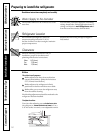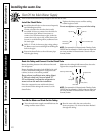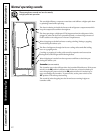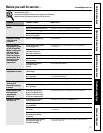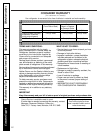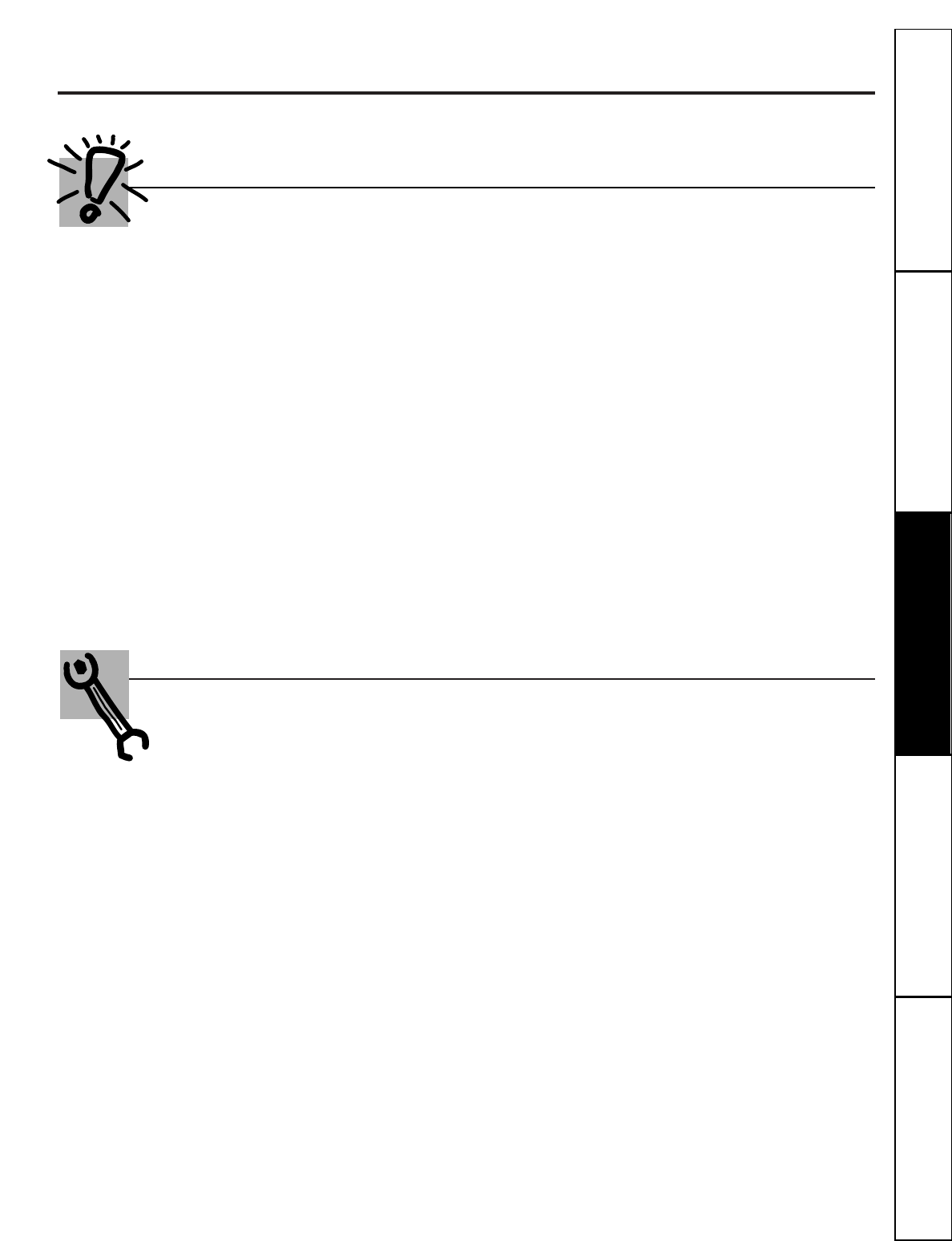
Installing the water line.
Read these instructions completely and carefully.
What You Will Need
To determine how much tubing you need:
Measure the distance from the water valve on the back of the refrigerator to the water supply pipe.
Then add 8 feet (244 cm). Be sure there is sufficient extra tubing [about 8 feet (244 cm) coiled into
3 turns of about 10 inches (25 cm) diameter] to allow the refrigerator to move out from the wall
after installation.
■
A GE water supply kit
(containing tubing, shutoff valve and fittings listed below) is available at extra cost
from your dealer or from Parts and Accessories, 800-626-2002.
■
Cold water supply.
The water pressure must be between 20 and 120 p.s.i. (1.4–8.2 bar) on models without
a water filter and between 40 and 120 p.s.i. (2.8–8.2 bar) on models with a water filter.
■
Power drill.
■
Copper tubing or plastic tubing from a GE water supply kit,
1/4″ outer diameter to connect the refrigerator to
the water supply. Be sure both ends of the tubing are cut square.
Do not use plastic tubing or plastic fittings unless they are part of a GE water supply kit because the
water supply line is under pressure at all times. Certain types of plastic tubing may become brittle
with age and crack, resulting in water leakage.
■
Two 1/4
″
outer diameter compression nuts and 2 ferrules (sleeves)—
to connect the tubing to the shutoff valve
and the refrigerator water valve.
■ If your existing water line has a flared fitting at the end, you will need an
adapter
(available at plumbing
supply stores) to connect the water line to the refrigerator
OR
you can cut off the flared fitting with a
tube cutter
and then use a compression fitting.
■
Shutoff valve
to connect to the cold water line. The shutoff valve should have a water inlet with a minimum
inside diameter of 5/32″ at the point of connection to the
COLD WATER LINE.
Saddle-type shutoff valves
are included in many water supply kits. Before purchasing, make sure a saddle-type valve complies with
your local plumbing codes.
Before You Begin
■
When connecting a GE Reverse Osmosis Water System to your refrigerator, the only approved
installation is with a GE RVKIT.
■
If the water supply to the refrigerator is from a Reverse Osmosis Water Filtration System AND the
refrigerator also has a water filter, use the refrigerator’s filter bypass plug. Using the refrigerator’s water
filtration cartridge in conjunction with the RO filter can result in hollow ice cubes and slower water flow
from the water dispenser.
■
This water line installation is not warranted by the refrigerator or icemaker manufacturer. Follow
these instructions carefully to minimize the risk of expensive water damage.
■
Water hammer (water banging in the pipes) in house plumbing can cause damage to refrigerator
parts and lead to water leakage or flooding. Call a qualified plumber to correct water hammer
before installing the water supply line to the refrigerator.
■
To prevent burns and product damage, do not hook up the water line to the hot water line.
■
If you use your refrigerator before connecting the water line, make sure the icemaker power
switch is set to the OFF position.
■
Do not install the icemaker tubing in areas where temperatures fall below freezing.
■
When using any electrical device (such as a power drill) during installation, be sure the device
is insulated or wired in a manner to prevent the hazard of electric shock.
■
All installations must be in accordance with local plumbing code requirements.
19
Consumer SupportTroubleshooting Tips
Operating InstructionsSafety Instructions
Installation Instructions








